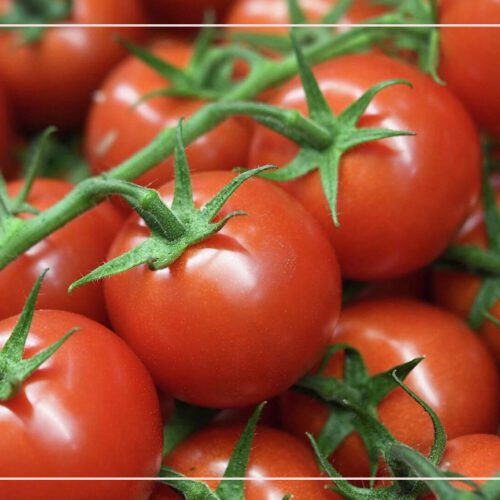
Protect Your Sweet Potato from Black Rot
Sweet potatoes are an incredibly important crop and food source around the world. They require a long growing season of 90 to 150 warm days in order to mature and be harvested. Unfortunately, sweet potato black rot is a potentially damaging fungal disease that can significantly reduce yields if not managed properly. But to be optimistic, various methods are available to help prevent and control this disease. In this article, we will explore this fungal disease, learn more about its symptoms, and discover how to protect sweet potato yields.
What is black rot?
Sweet potato black rot is a devastating fungal disease that affects the quality and yield of sweet potato crops. Although it can be easily prevented with good cultural practices, chemical control of already infected plants is not available. Therefore, farmers are urged to practice preventive measures and implement integrated pest management strategies in order to reduce the risk of this disease in their sweet potato crops.
Symptoms of black rot in sweet potatoes:
We can notice dry, dark, bruise-like spots on sweet potatoes which are considered the most common symptoms of Black rot disease. Several types of plants can be affected such as cacao, taro, cassava, coffee, and mango.
The fungus usually breaks down the vascular layer on the root’s surface and rarely reaches the inner tissues of the tuber. Infected plants have small round spots which are one of the initial symptoms. Unfortunately, once sweet potatoes are infected and the spots are recognized, they become animal feed or could be disposed of with garbage.
The small spots will probably develop into bigger and darker ones and have tiny black fungal structures. After that, fungal pathogens could cause a sweet smell to attract insects and transmit the disease to other fruits. The rot infection rarely reaches the cortex of the fruit.
The symptoms can be noticed in the harvest most of the time, or during the storage period where it develops. Otherwise, it would be recognized in the market.
Preventing the Spread of Potato Black Rot Disease
To prevent the spread of this disease, it is important to understand how it spreads and what measures can be taken to reduce its impact. Sweet potato black rot can be avoided by taking preventative measures.
The main source of the fungus is infected underground roots or cuts. It can also linger in the soil for years and gain access to the tubers through open wounds. Furthermore, the fungus survives through winter in the sweet potato plant residue or specific host plants like wild morning glories. It bears plenty of spores that contaminate apparatus, washing bins, gloves, and crates. Normally, one diseased potato is capable enough to spread the infection throughout a treated and packaged batch.
Steps to prevent black rot:
- Insects, such as sweet potato weevils, are known to transmit this disease too. Warmer temperatures between 50-60°F (10-16°C) promote the formation of spores and facilitate their spread.
- Preventing black rot should be the primary focus, as fungicides or other chemicals have no effect on it. Taking proactive steps to avoid contamination is the surefire way to keep your plants healthy.
- It’s important to purchase disease-free root slips when it comes to planting sweet potatoes. Make sure not to do so in the same area too frequently, as spacing them out every 3 – 4 years is recommended.
- Once you have harvested the host plants, make sure to wash and treat them straight away. Discard any potatoes that have signs of disease or are suspicious. Leaving them too long to dry could result in a poor outcome.
- Carefully clean any equipment to prevent any potential damage to slips or roots.
- To prevent potential damage caused by slips or roots, a pre-planting dip with fungicide is recommended, and we’re talking here about bio fungicides. See Rootmax Powder
- Taking proper care of the plants and following good sanitation practices can help in preventing major damage to the sweet potatoes.
Organic practices to manage sweet potato black rot:
Organic practices are an effective and sustainable way to manage sweet potato black rot diseases. By using organic practices, farmers can reduce the need for chemical fertilizers and pesticides while still promoting healthy crop growth.
Organic practices also help to create a healthier environment by reducing water and soil contamination, as well as improving air quality. Additionally, organic farming can contribute to the preservation of biodiversity, as it encourages the use of beneficial insects and other natural predators that can help control pests and diseases.
All these benefits make organic practices an attractive option for managing sweet potato black rot diseases.
As sweet potato farmers, it is essential to be aware of the dangers of this disease and take steps to prevent it from occurring. Now they can make sure to protect their crops better by taking preventative action and being aware of the potential consequences of black rot.
Common Questions:
Can you eat sweet potatoes with black rot?
Sweet potatoes are quite resilient and can be stored for a long time. However, sometimes they may appear with black spots before or after being cooked. It’s important to mention that these spots do not interfere with the vegetable’s edibility.
What are the symptoms of black rot on sweet potatoes?
Early signs of black rot in sweet potatoes include small, circular, and slightly dark areas on the surface which appear to be dark brown or gray. Furthermore, the presence of white, fluffy mycelial growth of Ceratocystis fimbriata is indicative of a black rot lesion.
How long can you leave potatoes in the ground before they rot?
If the soil is dry and the temperature is above freezing, you can leave potatoes in the ground for a few days. However, it’s best to harvest them within a short time frame in order to avoid rotting.





